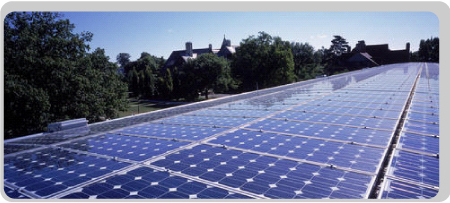How To Green Your Home
By Gil Zeimer & Michael Tauber
You may have switched from incandescent bulbs to CFLs. You may want to “get off the grid” by installing super-efficient BIPV solar roof panels. You may even have purchased a tankless water heater.
 But if you really want to know the best way to green your home, consult a LEED Accredited Professional. So I called Michael Tauber Architecture of San Francisco for advice.
But if you really want to know the best way to green your home, consult a LEED Accredited Professional. So I called Michael Tauber Architecture of San Francisco for advice.
Mr. Tauber suggested LEED for Homes, the national benchmark for a voluntary rating system that promotes the design and construction of high performance green homes, as developed by the U.S. Green Building Council.
To use less energy, water and natural resources, LEED uses these five categories as a roadmap to going green:
1) Indoor environmental quality —- Improve your indoor air quality by switching to products that are low emitters of VOCs (volatile organic compounds), such as low or zero VOC paint, wood finishes, sealants and cleaning products. Promote low-emitting carpets and furniture. Use wood alternatives or FSC-certified wood products for flooring and cabinetry materials, such as linoleum, recycled-content tile or non-VOC carpet.. Use only plywoods, and medium density fiberboards (MDF) that have no added urea formadehyde, a carcinogen. Try bamboo, cork, and eucalyptus flooring that are sustainable alternatives to traditional hardwoods and make sure the finishes are low VOC emitters.
2) Materials and resources —- Search for high-recycled materials with pre-consumer content sourced within 500 miles of your home vs. those shipped or flown across oceans with higher environmental impacts. Use larger windows that offer more natural light or a higher quality of glass. Strive to re-use materials in a new and creative way, such as barn siding for a ceiling.
3) Energy and atmosphere —- Purchase higher performing windows than single or dual pane, such as low E2 that reflect solar heat rather than letting it in. Buy photovoltaics with generous state and federal incentives to generate solar energy. Use CFLs (compact fluorescent lights), light sensors in certain rooms, and ENERGY STAR® appliances for lower energy usage. (Note: Australia has eliminated the use of incandescent bulbs in favor of CFLs. Other countries may soon follow.)
4) Water use —- Outside: Select native or drought tolerant species that use less water, fertilizer and insecticides, Use turf grass and more efficient irrigation heads to conserve water. Capture rainwater for reuse with grey and wastewater for landscaping. Indoor: Purchase aerators to sinks, low-flow showerheads, and low-flow or dual flush toilets. Extreme measure: consider composting toilets.
5) Sustainable site selection —- Consider storm water control, even a green vegetative roof that enables water to penetrate, or a highly reflective roof with BIPV integrated tiles. Be mindful of light pollution so you’re not lighting the sky.
For more information about greening your primary residence through a LEED Certified Professional, visit the U.S. Green Building Council Website.

This advice is really going to help, thanks.